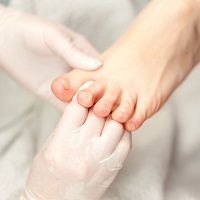Article
Charcot Foot: Diabetes at Risk
Author(s):
Microvascular disease is a concern in patients with diabetes, and follows hyperglycemia-induced endothelial damage or endothelial dysfunction. Diabetic neuropathy is the most prominent microvascular consequence of diabetes, and often, the foot is involved.

When we think of diabetes mellitus and its complications, it’s usually the cardiovascular and renal developments that come to mind first. These macrovascular complications create a large burden for affected patients and the healthcare system. Microvascular disease is also a concern and follows hyperglycemia-induced endothelial damage or endothelial dysfunction. Diabetic neuropathy is the most prominent microvascular consequence of diabetes, and often, the foot is involved.
Researchers from the United Kingdom have published a review of a specific microvascular neuropathy, Charcot Foot (CF), in the December 2014 issue of Current Diabetes Reports. CF is a debilitating medical emergency that has a propensity to cause anatomic distortion. Until 1936, physicians believed that syphilis caused most CF cases; in that year, however, CF was linked to diabetes.
Delayed diagnosis, often because clinicians lack clinical expertise in CF management, can lead to unnecessary complication for patients. This includes irreversible and persistent joint destruction that respond poorly—if at all—to medical or surgical treatment.
This paper covers 2 theories of CF’s pathogenesis:
- Under the neurotraumatic theory, repeated trauma to abnormal plantar pressures on an insensitive foot causes unrestricted bone distress, microfractures, and joint and ligament instability that moulds the unstable foot.
- According to the neurovascular theory, increased blood flow from underlying diabetic autonomic neuropathy creates an environment ripe for localized bone resorption and osteopenia.
Up to half of CF cases follow a known traumatic injury to the foot.
Management follows the Eichenholtz staging system, starting with the prodromal period at stage 0 and progressing to stage 1 (acute or developmental phase), stage 2 (the sub-acute or coalescent phase), and as inflammation dissipates and the joint architecture remodels, stage 3 (reconstructive phase).
Clinicians need to advise patients to offload and immobilize the affected foot immediately. Use of a total contact cast or other immobilizing device can help stabilize the foot. Current anti-resorptive agents—bisphosphonates, calcitonin and inflammatory modulators—may also help restore bone mineral density. These agents should be used with, and not as an alternative to, offloading.





